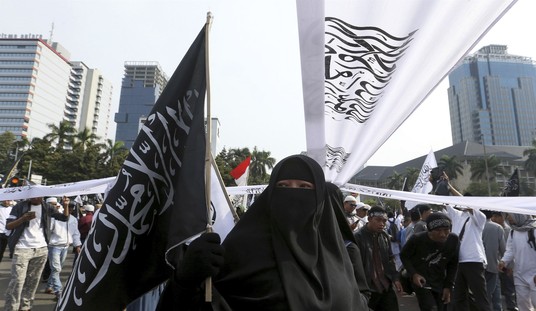October 8, 1871.
First, the wind: Hot, dry, and relentless, racing quickly across the plains like a warning.
Chicago was a furnace by midnight, with flames leaping between rooflines and smoke smothering the stars. Within 36 hours, one of America's most iconic cities was in ruins.
That's the big fire we've all known, along with the stories we've shared for generations: A spark in a barn, legendary rebirth, Chicago falling then rising again, and its ashes turning into a moral parable about grit and progress.
While the world watched Chicago burn, a much deadlier firestorm was raging 250 miles north, devouring forests and towns along the Peshtigo River in northeastern Wisconsin.
That fire burned hotter, faster, and with more fury than anything this continent had seen before, killing over 1,200 people, maybe double that. Yet most Americans have never heard its name.
The difference? Chicago had headlines; Peshtigo had silence.
While Chicago Burned, Wisconsin Vanished
The Peshtigo Fire didn't just destroy; it erased, burning so hot that sand turned to glass and iron wagons melted into the ground.
The air itself caught fire.
Eyewitnesses reported that the flames formed a cyclone, a tornado of fire that lifted houses whole, twisting trees from the earth and hurling them across the river. Nobody could outrun a fire that reached an estimated temperature of 2,000 ºF.
One of the few survivors, Reverend Peter Pernin, wrote about fleeing with his parishioners to the Peshtigo River, "I saw nothing but flames… the air itself seemed on fire."
Pernin carried a church tabernacle into the water, clutching it through the night as his town vanished behind him. That tabernacle was blackened but intact, and today it sits inside the Peshtigo Fire Museum, quietly reminding us that faith sometimes floats where everything else sinks.
The Perfect Storm
For months before the fire, the forests of northern Wisconsin had been parched because of drought. Loggers didn't help; they left behind mountains of dry bark and splintered timber, known as slash. In the meantime, farmers set small brush fires to clear land, and sparks flickered along the railroad tracks.
Rolling in like an executioner came a cold front, pushing fierce southwest winds into all that dry tinder. Dozens of smaller fires combined into a single, vast inferno, and within hours, an area ten miles wide and forty miles long was reduced to ash.
Entire towns disappeared: Peshtigo, Brussels, Williamsonville, and Sugar Bush. An unknown number of lumbermen, millhands, and immigrant families perished, and their names never made the census.
It was an indiscriminate fire, consuming wealth and poverty alike. Where the Chicago Fire killed roughly 300 people, Peshtigo killed five times that many.
And, it didn't even make the front page.
Related: Oct. 8: The Great Chicago Fire and the Revolutionary Construction Methods That Rebuilt the City
History’s Unfair Ledger
The easy explanation behind the lack of news about Peshtigo is geography. Plus, Chicago was thriving, characterized by wealth, commerce, and a growing significant political influence.
Reporters had access, the telegraph lines still worked, and the city had something the rural north didn't: a narrative for people to remember and use.
Things were different in Peshtigo; it was a lumber town, isolated and poor. By the time word of the Peshtigo fire reached the big papers, its people were already gone.
Chicago became a symbol of renewal, of how civilization triumphs over chaos. Peshtigo became a cautionary footnote on how nature erases you without ceremony.
And as it often does, history chose the prettier story.
The Quiet Left Behind
As you walk through the Peshtigo Fire Cemetery, you see the mass grave where more than 300 unidentified victims were buried together.
The bodies were too charred to identify, and there were too many to count. Above them, a stone marker reads, "For all who perished here, unknown but not forgotten."
Unfortunately, they were forgotten. Chicago's skyline rose again within a decade; Peshtigo's pine forests grew back, over bones. Each October, the anniversary of the Chicago fire is continually marked by documentaries, retrospectives, and remembrance.
Meanwhile, Peshtigo gets a few candles, flickering in the wind.
This imbalance reveals something uncomfortable about us, not just about how we remember, but also about what we choose to remember.
Americans remember the stories that make us feel strong, while forgetting those that remind us of our fragility.
A Chip on the Shoulder
Spending time in Peshtigo today lets you feel the intensity, the quiet chip on the shoulder, passed down like an heirloom. Locals tell you straight: "Chicago gets the glory. We got the graveyard."
Peshtigo families came together to build a small museum, hold vigils, keep the cemetery neat, and accept the fact that most Americans couldn't find Peshtigo on a map. But there's a pride beneath the politeness, a fierce loyalty to the memory of those who never got their headline.
Keep in mind that it's not bitterness; it's justice, because when a community loses everything, all that's left to guard is memory, something the people of Peshtigo guard with the stubborn strength of the Northwoods.
The Memory That Failed Them
We might consider memory itself as a kind of fire, spreading evenly, devouring everything it reaches, sparing what's too far from its heat. Cities, with architects and survivors, see that memory fire burning brightly, along with survivors who tell their tales.
In places like Peshtigo, where witnesses were buried and records burned, that memory flickers and fades.
This difference is particularly cruel because history rewards endurance, but not always virtue, immortalizing what rebuilds, not what quietly perishes.
Peshtigo, unlike Chicago, never had its phoenix moment; it had ashes and silence.
That's all.
A Lesson for Our Time
Ours is an age obsessed with the present, with viral clips leading to quick outrage, and stories that burn bright and vanish.
Peshtigo's lesson isn't just about a forgotten fire; it's about the danger of forgetting altogether. When we stop remembering history's tragedies, which often earn only a paragraph or two in history books, we lose part of our humanity.
Our society has become much like the winds of 1871: loud, restless, and destructive, never pausing long enough to see what's been lost in the smoke.
I mean no disrespect for Chicago's story of rebirth, but Peshtigo's silent rebirth is the better story.
Final Thoughts
If memory is a mirror, it's cracked. Some stories reflect, shining clearly; others fade behind the reflection. The people of Peshtigo deserve to be seen again, if only so we're able to remember that greatness isn't measured by what's rebuilt, but by what we refused to forget.
The fire that history tried to forget still burns in the quiet of Wisconsin's forests, echoing in the silence of names never spoken and in the wind that still howls down the riverbanks.
Every October, when Chicago celebrates resilience, Peshtigo sits in relative silence, a testament to the fact that memory is as merciless as fire.
Keeping Memory Honest
History plays favorites. It celebrates the cities, forgets the towns, and edits the truth to fit a tidy headline. At PJ Media, we push back. We write about the places and people that history leaves behind, the Peshtigos, not just the Chicagos.
If you believe truth deserves a memory of its own, join us.
The Schumer Shutdown is here. Rather than put the American people first, Chuck Schumer and the radical Democrats forced a government shutdown for healthcare for illegals. They own this.
Help us continue to report the truth about the Schumer Shutdown. Use promo code POTUS47 to get 74% off your VIP membership.










Join the conversation as a VIP Member